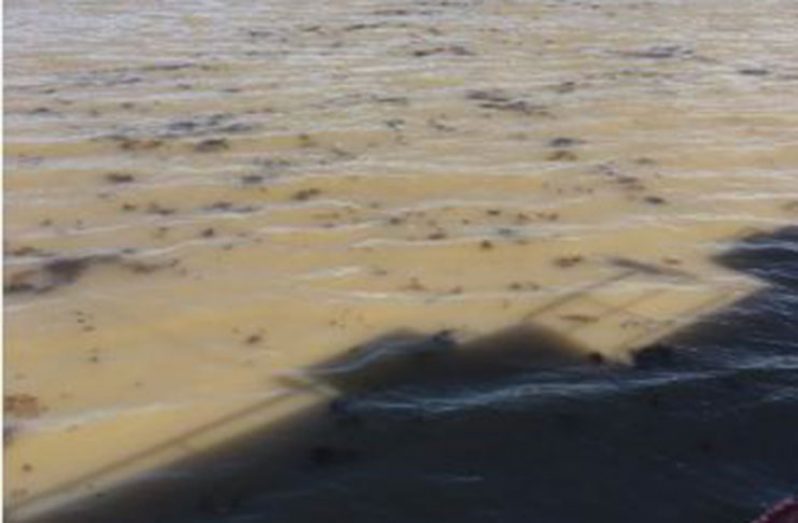THE measures put in place by the Ministry of Public Health in its bid to stem the deadly coronavirus (COVID-19) from spreading has also impacted the fisheries sector, particularly artisanal fisherfolk and fish vendors.
Essentially, there has been a reduction in overall fishing activity; however, there is need for a post COVID-19 study in order to more accurately determine the impact of the deadly coronavirus and the measures to eliminate same have had on fisherfolk, according to Mikhail Amsterdam, Fisheries Officer attached to the Fisheries Department in the Ministry of Agriculture, during a recent informal discourse with this publication.
In several of the country’s communities, small-scale fishing dominates the fishing sector and the sector is still a significant contributor to employment and food security by providing a cheap and nutritious source of protein in diets.
Fish and other aquatic foods are a key part of the country’s food system. On any given day, but particularly at weekends, there is a congregation of large numbers of people seeking to purchase fish at the Fisheries Wharf at Meadow Bank.
Whether the social-distancing measure is practised there is not known. However, at the municipal markets, namely Stabroek, Bourda, Albouystown and East La Penitence, the Mayor and City Council (M&CC) which has overall responsibility for the operations, has put in place restrictions to govern the day-to-day activities at those outlets where fish is also offered for sale by vendors. To some extent, the measures have been extended to roadside vending, where sometimes fish and poultry products are offered for sale.

along the Kitty foreshore (Photos courtesy of Mikhail Amsterdam)
The Guyana Chronicle learnt during the discussion that in the semi–industrial sub sector, the Fisheries Department has, since the advent of COVID-19 here, placed a restriction on new foreign fishing crews entering Guyana to work under contract with local companies. Additionally, the department has placed a hold on the processing of registrations or applications for artisanal or industrial fishing licences.
However, export and import documents are still being processed on pre-determined days during the work week.
Touching on the issue of sargassum, known locally as seaweed, Amsterdam pointed out that in recent years the Caribbean has seen an influx of the sargassum. Guyana has been no exception, with considerable deposits washing ashore in 2014, 2015, 2019 and again this year. The impact varies as it affects multiple sectors ecologically, economically and socially.
Just recently, the seaweed has again been washing up in the vicinity of the Kitty
foreshore and the foul smell as it rots is unbearable.
Amsterdam explained that the stranded sargassum near landing sites and channels as it rots produces the foul-smelling hydrogen sulphide gas and environmental anoxia. Also, numerous studies have purported that fishermen who frequent the affected areas may suffer from disturbed sleep, nausea, eye irritations and headaches, as a result of the gas.
A typical saragassum ‘invasion’ affects brackish (estuarine), marine and coastal waters. Large clusters of this floating algae end up along Guyana’s mudflats, mangrove areas and beaches, having the potential to impede maritime navigation, artisanal and industrial fishermen who depend on our marine environment for their livelihoods, Amsterdam explained.
The sargassum is a genus that consists of several algae, usually dark brown or golden green in colour, from the Sargasso Sea, from whence the species derived its name. However, sargassum natans (common Gulfweed) and S. fluitans (broad-toothed Gulfweed) which are most common in the Caribbean are endemic, free-floating and abundant in the warm, temperate and subtropical areas of the north Atlantic Ocean.
Amsterdam noted that for a traditional sector such as fisheries which provides direct and indirect employment for thousands of Guyanese and having significant social and cultural importance, there is need to address this re-emerging threat. He considers it as a contributing factor for Guyana’s reduced fish production in 2014-2015, when production dropped by approximately 10,000 metric tonnes.
The management of sargassum will create several economic challenges for
Guyana, as it often requires extended heavy-equipment operations and
Infrastructural adding modifications to enable its collection, transport and disposal.
Intersectoral coordination of communication, research and management will be
the most effective tools to combat this fairly novel challenge.
Several Caribbean nations have explored opportunities in adding value as a means
of sustainable management.
Ultimately, the development of research and business opportunities related to
sargassum will allow Guyana to sustainably redress some of the socio-economic issues
brought about by its presence. Also, regional collaboration will also ensure more
informed decision-making and policy creation by relevant agencies, Amsterdam
proffered.



.jpg)










